As 2023 comes to a close, we are taking a look back at some of the biggest space stories of the year.
Asteroid sample returns to Earth
A container carrying asteroid material captured in space three years ago arrived safely on Earth in September. The container, or capsule, was released by the American space agency NASA’s Osiris-Rex spacecraft. It floated to Earth and landed in a desert area in the western state of Utah.
The spacecraft captured the asteroid material, or sample, from the asteroid Bennu in 2020. NASA announced in October the first examinations of the sample showed evidence of high-carbon material and water. These two substances suggest the possibility that “the building blocks of life on Earth may be found in the rock.”
Psyche mission
NASA’s Psyche spacecraft launched on a mission to observe an asteroid made mostly of metal. It is expected to travel 3.6 billion kilometers over six years to reach the asteroid, also called Psyche.
NASA believes the asteroid could have separated during violent crashes that happened during our solar system’s early creation. Scientists think data collected on the asteroid could provide new details about how rocky planets, including Earth, formed.
Laser communication demonstration
The Psyche spacecraft is also being used to test a laser-based communication method. The system aims to greatly improve data links between Earth and spacecraft exploring deep space.
A few weeks ago, NASA demonstrated the technology with a short video sent by the laser technology over 30 million kilometers to Earth. The space agency said it took less than two minutes for the video to reach an observatory in California. The video showed a cat repeatedly chasing a red laser light.
Oldest black hole discovery
Scientists announced last month they had discovered the oldest black hole ever found. The huge object is believed to have formed about 470 million years after the Big Bang. The researchers said the findings confirm their theory that supermassive black holes existed in the very early universe.
European telescope shows ‘dark universe’
Last month, the European Space Agency (ESA) released the first images from its new Euclid space telescope. ESA designed Euclid to study dark matter and dark energy. Scientists think those hidden forms of matter and energy make up 95 percent of the universe. ESA said the newly-released images covered 1,000 galaxies about 240 million light years away from Earth.
Webb telescope observes distant black hole
Data collected by NASA’s James Webb Space Telescope helped astronomers identify the most distant, active supermassive black hole ever discovered. Researchers said the black hole sits at the center of a galaxy called CEERS 1019. The galaxy is estimated to have existed about 570 million years after the Big Bang.
Ingenuity helicopter keeps exploring Mars
Earlier this month, NASA said its Ingenuity helicopter continues to perform well in tests carried out on Mars. So far, Ingenuity has completed at least 66 flights over the past two-and-a-half years. NASA said it is also testing equipment on Earth that it plans to include in future helicopters built for space exploration. The latest tests on Earth involved new rotor blades the space agency said reached speeds near the speed of sound in experiments.
India lands spacecraft on moon
In August, India became the fourth country to successfully land a spacecraft on the moon. The moon lander, called Chandrayaan-3, also became the first spacecraft to land near the moon’s south pole. The south pole is thought to be an important area, with scientists saying it may contain large amounts of frozen water and minerals.
Chinese water discovery on moon
Chinese scientists announced in March they had discovered water in materials collected during the country’s Chang’e 5 mission. Researchers from Nanjing University reported the water was in the form of extremely small beads found in dirt collected in 2020. The scientists noted that billions, if not trillions, of these beads could exist on the moon, possibly providing a huge water source. But the team said mining the water would be difficult.
I’m Bryan Lynn.
Bryan Lynn wrote this story for VOA Learning English.
_____________________________________________
Words in This Story
asteroid– n. an object made of rock and metal that orbits the sun, but is smaller than planets
mission – n. a flight by a spacecraft to perform a specific task
rotor blade – n. a thin, flat pieces of material that spin to make aircraft lift off the ground and travel
bead – n. a small, round drop of liquid (such as water or blood)



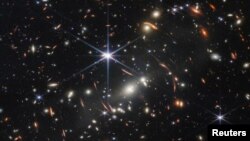


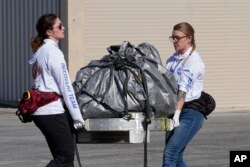
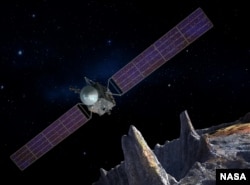
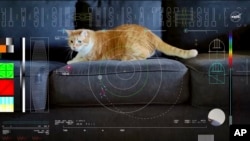
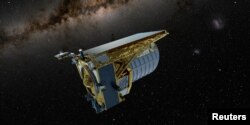

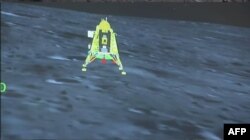
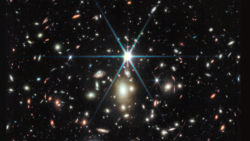


Forum